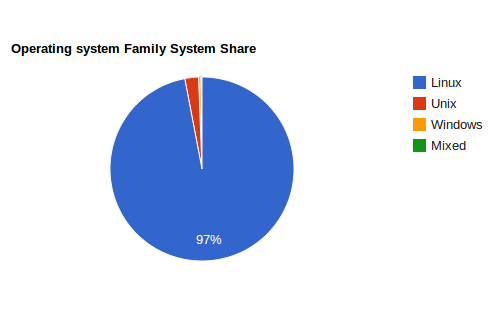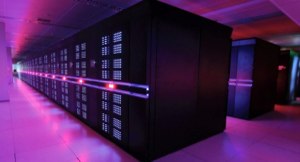- Sep 17, 2013
- 1,492

It's always been fun watching Linux claim a bit more of the Top500 with each successive ranking of the world's most powerful supercomputers, but with this week's release of the Top500 list's 43rd edition, it's beginning to look like the free and open source operating system is getting pretty close to complete domination.
Not only does Linux power all of the top 10 machines on the June 2014 list -- including China's winning Tianhe-2, which stole the show once again with its performance of 33.86 Petaflop/second (Pflop/s) on the Linpack benchmark -- but it also now accounts for a full 97 percent of the full set of 500. A mere 15 supercomputers on the list *don't* use Linux, including 12 using Unix and just two using Windows. (The last one is described simply as "Mixed.")
Just a year ago, Linux's share of the Top500 was 95.2 percent. At this rate, it's only natural to speculate that Linux could claim a full 100 percent in not too long.
Other highlights from this latest Top500 list include a new entry in the No. 10 spot -- a 3.14 Pflop/s Cray XC30 installed at an undisclosed U.S. government site -- and an increase in the total combined performance of all 500 systems to 274 Pflop/s, up from 250 Pflop/s six months ago and 223 Pflop/s one year ago. A full 37 systems on the list now offer performance greater than one Pflop/s, compared with just 31 six months ago.
Next Up: Exascale Computing
Yet while there's clearly performance growth going on, these days it's not happening at the same rapid rate that it used to be, the Top500 list creators noted.
"The battle up to petascale supercomputers was driving more change," Meike Chabowski, senior product marketing manager with SUSE, told Linux.com. "Now that petascale has been reached and is kind of a standard, the list 'calmed' a bit."

China's winning Tianhe-2 stole the show once again with its performance of 33.86 Petaflop/second (Pflop/s) on the Linpack benchmark.
The next goal will be exascale supercomputers, but "there is no real hurry for it, as there are no real workloads yet for exascale computers," Chabowski pointed out. "The means of hurrying and driving performance now to a bigger scale is not really useful."
Exascale computing might be possible by 2018, "but currently trying to get massively more computing power would probably not really help for the use cases," she said. "And there is a bit more sensitivity also towards green computing."
Meanwhile, the fact that supercomputing is still primarily driven by government and academia has also played a role, as economic challenges have led to less investment during the past year or two.
'Nearly Every industry Is Using HPC'
Nevertheless, high-performance computing (HPC) in general is growing, and this growth is driven by the private, commercial segment, Chabowski said.
"HPC technology is not just used anymore for research and government -- nearly every industry is using HPC technologies nowadays," she explained. "These can be seen in CAD modeling for car manufacturing; online gaming; movies, animation and entertainment; and ultrascale Internet computing."
Will Linux inch closer to 100 percent domination in November's list? Only time will tell. In the meantime, you can see the latest list in its entirety on the Top500 site.

